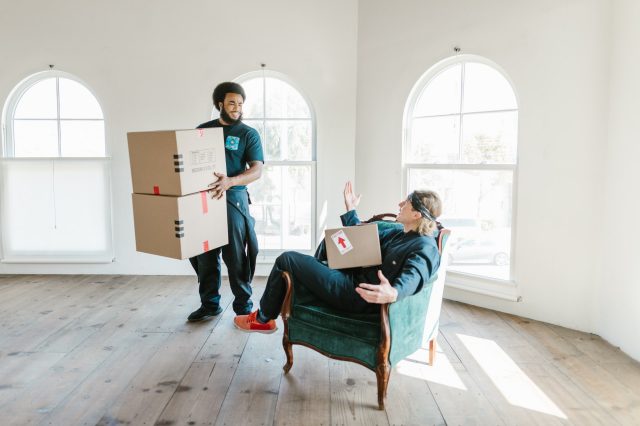The basic idea here is to cover your floors and carpets with various types of protective materials so that no damage can reach them and you need to follow tips for moving your furniture.
Moving Furniture Tips
- Old carpet.
Use old rugs or old blankets that you can find in your home to create temporary floor protection on the day of the move. Place rugs strategically along exit paths to keep water or dirt off the lower floors and provide a protective barrier against bumps and scratches.
Keep in mind that rugs and blankets that you use to protect your floors can be completely damaged. So, choose protections that will not bother you after the move.
Floor runners. Consider using floor pads as an excellent line of defense for the floors and carpets in your home. These protective coatings are made of neoprene and have a non-slip surface on one side to prevent them from moving during use.
How to protect the upholstered stars when moving? Conveniently, floor runners can also be great stair runners because they can be used directly on stairs as protection while keeping people safe by not allowing them to slide downhill or upstairs. Unfortunately, the use of floor mats can put a strain on your budget because they can be expensive. Instead of doing yourself, if you hire House Removals Fulham then you will free from loading and packing tensions.
Mobile trolleys with clean rubber wheels and large sheets of thick cardboard are two effective soil protection techniques.
The so-called carpet masking is very easy to install and often has a non-slip surface that will also reduce the risk of accidental slips. The disadvantage of using self-adhesive carpet film protectors is that you will have to buy them – an extra expense you should be able to avoid – read on to find out how.
Also Read – Great Ideas For Home Decor in Modern Days
- Cardboard paper
Take advantage of the unparalleled versatility of cardboard to protect hardwood, tile, laminate or carpeted floors in your home. Flatten the cardboard boxes you do not really need and place the thick cardboard sheets directly on the floor as extra protection.
The best thing about using cardboard to protect your floors and carpets during the move is that it is virtually free, or at least perfectly affordable because you will only break boxes you will not need to pack. and store the items. In other words, you already have the cardboard, why not take advantage of it?
Under normal circumstances and intended use, the cardboard will not scratch the hardwood floors, so positioning large pieces of corrugated cardboard along the areas that will support the heaviest traffic should be your best way to protect the floors.
How serious are you about protecting your floors during the move?
If you are about to move heavy furniture, House Removals Twickenham, and you are seriously concerned that improper action may cause significant damage to the cladding of your home or apartment
- Carpet removal
How to protect your carpets during a move? When you are concerned about the fate of your expensive carpets, simply wrap them up and remove them before the relocation begins. It’s the easiest thing you can do to make sure no damage will be done to the carpet in your home.
Nevertheless, you should always use one of the floor protections boards above to protect the floor which is now bare after the removal of all carpets and rugs.
Hire the best-rated movers and it will not happen to you.
Good movers. The third and last type of floor protection is to trust this task to House Removals Chelsea who knows how to avoid material damage of any kind. Experienced movers use a variety of techniques to ensure that your floors and carpets remain intact and 100% safe during the move.
Also Read – Declutter Your Home with a Plastic Box









